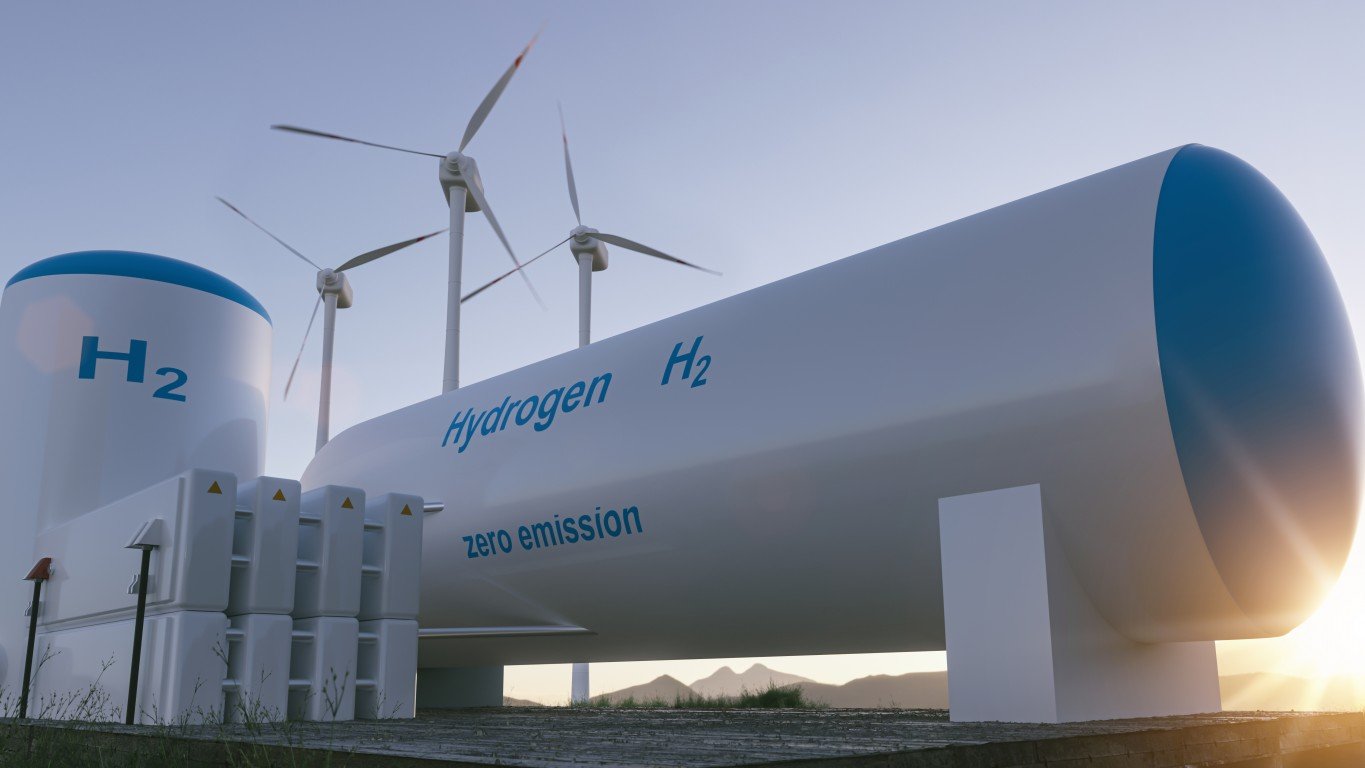

In the past two weeks, two U.S.-traded companies involved in the hydrogen business have issued more stock and raised more than $500 million in fresh cash. Canada-based Ballard Power Systems Inc. (NASDAQ: BLDP) raised $402.5 million in a bought deal for 23.6 million shares and FuelCell Energy Inc. (NASDAQ: FCEL) raised about $129 million in a secondary offering.
[in-text-ad]
The Ballard Power deal closed on November 27 at a price of $19.25 per share. Underwriters National Bank Financial, Raymond James, Cormark Securities and TD Securities acquired an upsized total of 20.9 million shares plus an overallotment of 2.7 million shares. The stock closed at $20.27 per share the day following the first announcement of the sale, and shares trailed lower to trade at around $19.10 early Thursday morning.
FuelCell Energy on Tuesday sold 34.5 million shares priced at $6.50 apiece, about 28% below the day’s closing price of $9.05. While the stock dipped to $6.52 on Wednesday, shares traded up nearly 8% early Thursday at $7.80.
The wariness about the two companies’ shares reflects investors’ uncertainty about the speed and scale of a build-out of hydrogen capacity. An article at Bloomberg suggests that building enough hydrogen production capacity to make a dent in carbon emissions by 2050 would cost north of $1 trillion.
The European Union is considering spending as much as $558 billion by 2050 to develop green hydrogen. Green hydrogen uses only water and electricity generated from renewable sources like wind and solar as raw materials. So-called gray hydrogen uses either natural gas or coal to generate electricity, and “blue” hydrogen uses gas or coal but captures and stores carbon emissions.
The trick is going to be reducing costs fast enough to spur more investment. Using a hypothesis called Wright’s Law, BloombergNEF notes that the cost of solar modules declined by 28.5% for every doubling of solar generation capacity. The cost of the electrolyzers for the production of green hydrogen could fall by 20% with each doubling of capacity. As Bloomberg points out: “Fossil technologies can’t compete with that advantage, because their largest cost is typically the fuel itself, where prices show no long-lasting downward trend.”
One threat to the promise of low-cost green hydrogen is the raw material price. The proton exchange membrane (PEM) technology Ballard Power develops and sells uses platinum and a synthetic membrane developed by DuPont in the 1960s and now made and sold by Chemours. Platinum prices reached an all-time high of more than $2,200 an ounce in May of 2008 and currently trades at around $1,050 per ounce.
The other and more serious threat is government support. The EU plan could reduce the cost of hydrogen from a range of $3 to $8 per kilogram currently to around $1.50 by 2030, if 40 gigawatts of hydrogen electrolyzer capacity can be added by then. To reach that goal, BloombergNEF estimates the hydrogen industry will require about $150 billion in government subsidies by 2030 and much more in investment.
In August, consultancy Wood Mackenzie reported that the pipeline for green hydrogen projects had grown from around 3.5 gigawatts to 15.0 gigawatts in just 10 months, and the firm expects green hydrogen costs to equal gray hydrogen costs by 2040.
The volatility in share prices for technology companies like FuelCell Energy and Ballard Power reflects the short-term outlook of most investors. Neither company pays a dividend. Investing in either company with a 10-year or longer horizon simply doesn’t make a lot of sense, especially when the only way to post a profit from the investment is to sell the shares.
Over the past five years, FuelCell Energy stock has traded down about 94%, while Ballard Power shares is up nearly 1,300%. Over the past 12 months, FuelCell Energy shares are up about 980% and Ballard Power shares are up about 180%. An investment in Ballard Power in December of 1999 would have lost nearly a third as of Thursday. Similarly, an investment in FuelCell Energy would have lost 99% over the same period.
Shares of FuelCell Energy traded up about 4.6% in the late morning Thursday, at $7.57 in a 52-week range of $0.48 to $11.31. Shares traded as high as $8.00 before pulling back. The consensus price target on the stock is $3.17, up by $0.67 since Wednesday.
Ballard Power shares traded down about 2.3% at $18.61, still below the price the underwriters paid in last week’s deal. The 52-week trading range is $5.50 to $21.70, and the consensus price target is $24.09.
ALERT: Take This Retirement Quiz Now (Sponsored)
Take the quiz below to get matched with a financial advisor today.
Each advisor has been vetted by SmartAsset and is held to a fiduciary standard to act in your best interests.
Here’s how it works:
1. Answer SmartAsset advisor match quiz
2. Review your pre-screened matches at your leisure. Check out the advisors’ profiles.
3. Speak with advisors at no cost to you. Have an introductory call on the phone or introduction in person and choose whom to work with in the future
Take the retirement quiz right here.
Thank you for reading! Have some feedback for us?
Contact the 24/7 Wall St. editorial team.


